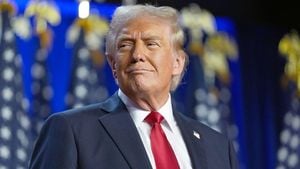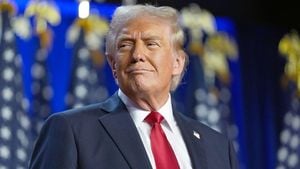Recently, the Federal Reserve concluded its November meetings with another cut to interest rates, continuing its approach to mitigate the impacts on the economy after years of combating inflation. The decision to lower rates by 25 basis points follows a more significant reduction of 50 basis points just two months earlier, reflecting the Fed’s efforts to strike a balance between encouraging economic growth and curbing inflation, which has been troubling for consumers and businesses alike.
Jerome Powell, the Chairman of the Federal Reserve, described the current economic environment as challenging, as the nation grapples with rising costs and various market fluctuations. During the session, Powell stated, “We are committed to ensuring inflation is kept under control, which remains our primary focus.” This sentiment echoes the Fed's larger struggle to navigate post-pandemic recovery.
Despite the cut, experts have weighed in with mixed feelings about how effective this measure will be. For example, EJ Antoni, an economist at the Heritage Foundation, expressed skepticism about the cut’s relevance to inflation or the labor market. He argued, “This has everything to do with saving the banks. A lot of financial institutions are on the wrong side of the interest trade, and that's causing tremendous losses within the financial system.”
Bankrate's Chief Financial Analyst, Greg McBride, elaborated on these sentiments, noting the dampened effect of the rate reduction due to rising Treasury yields. He mentioned, “Mortgage rates surged from about 6.2% to 7% in recent months, meaning the impact of even a quarter of a percentage point drop is overshadowed by the volatility we’re seeing elsewhere.” McBride emphasized the slow recovery expected from this economic stage, remarking, “Interest rates took the elevator going up, but they will take the stairs coming down.”
This combination of opinions paints a somber picture for many borrowers. McBride urged consumers to remain proactive about managing their debts, saying, “Borrowers won’t see immediate or substantive relief from falling rates but should stay aggressive about paying down high-cost debt.” These financial shifts underline the complexity of determining how the Fed's decisions will play out going forward.
The atmosphere is charged with uncertainty as the announcement arrives on the heels of political changes. The recent election of Donald Trump has prompted concerns among economists about potential shifts in economic policy. Analysts fear his proposals could lead to rising inflation and increased federal deficits, complicative factors for the Fed’s strategies. “Future adjustments are now uncertain, and we will have to see how this administration’s economic proposals will play out,” one market analyst noted.
Looking toward 2024 and beyond, the Federal Reserve faces the dual challenge of supporting the economy's recovery from the pandemic and adjusting its policies to adapt to the differing economic circumstances created by political changes. Financial markets, businesses, and consumers alike are closely monitoring the Fed’s moves.
Powell is scheduled to deliver remarks outlining the central bank's future intentions, expected to provide clarity on the Fed's direction amid these turbulent times. His address could potentially ease concerns or, conversely, heighten scrutiny of the decisions being made at the top levels of economic policy.
With rising interest rates coming at borrowers from numerous angles and taking their toll on various sectors, it remains to be seen how the new cuts will reshape financial landscapes, consumer behavior, and market interactions. The conversation continues among economists, analysts, and the public alike as everyone adjusts to new realities.



